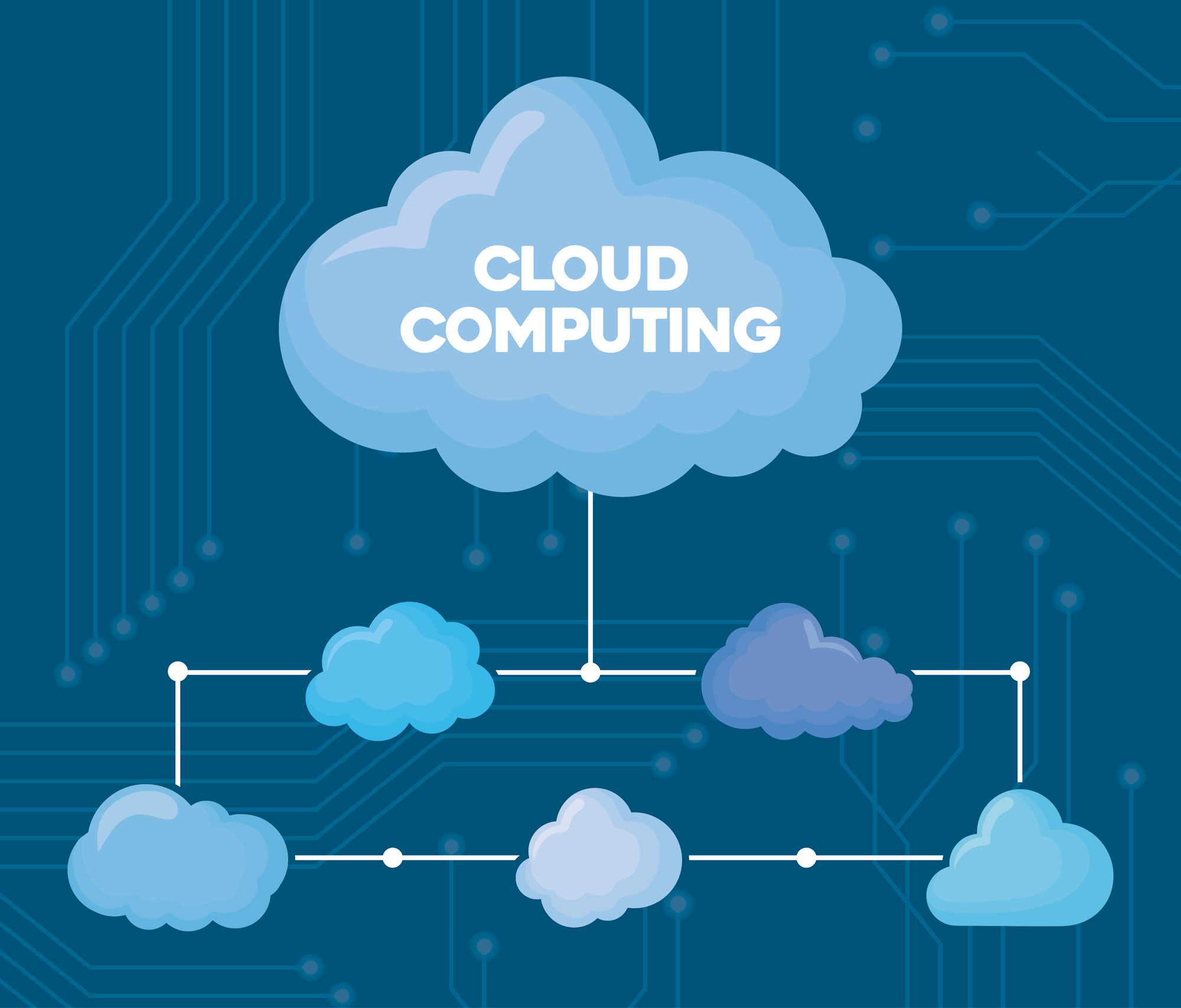In today’s digital landscape, a strong IT infrastructure is not just a luxury, but a necessity. It serves as the backbone that supports seamless operations, protects valuable data, and keeps businesses ahead of the curve.
Imagine your business as a well-oiled machine, smoothly running with minimal disruptions. That’s the power of a solid IT infrastructure. In this blog post, we’ll explore the best practices that can help you achieve just that.
From understanding the role of operating systems and the benefits of cloud infrastructure to the significance of security analysts and management tools, we’ll guide you through the essential elements of creating a resilient and high-performing IT infrastructure.
So, whether you’re a tech-savvy professional or someone new to the world of IT infrastructure, get ready to unlock the secrets to building a solid foundation that will support your business’s growth, enhance security, and pave the way for success in today’s interconnected world. Let’s dive in!

What Is IT Infrastructure?
It is like the backbone of a business’s technological setup. It includes the hardware, software, networks, and storage systems that support operations and keep things running smoothly. Just as a road trip needs a reliable vehicle and well-maintained roads, businesses rely on a robust and secure IT infrastructure to function effectively.
At its core, it consists of physical components like servers, routers, and data centers, as well as software components such as operating systems and applications. It also encompasses the networks that connect devices and enable data transfer.
A strong IT infrastructure is vital for businesses to stay competitive and adapt to technological changes. It enables efficient collaboration, secure data storage, and seamless communication. By having a solid infrastructure in place, businesses can focus on their core activities, while ensuring employees, customers, and stakeholders have confidence in their technological capabilities.
Maintaining optimal functionality requires effective management and monitoring. This involves tasks like configuring hardware and software, managing networks, implementing security measures, and planning for future growth.

Infrastructure Management
Infrastructure management refers to the set of processes, activities, and practices involved in effectively overseeing and maintaining an organization’s IT infrastructure. It encompasses various aspects of managing the hardware, software, networks, and data storage systems that form the foundation of an organization’s technological ecosystem.
The primary goal of infrastructure management is to ensure that the IT infrastructure operates smoothly, efficiently, and securely to support the organization’s operations and objectives.
Infrastructure management involves tasks such as planning, deploying, monitoring, configuring, and maintaining the infrastructure components.
Let’s explore the processes, best practices, and key components involved in infrastructure management.

Infrastructure Management Processes and Best Practices
Infrastructure management involves a set of processes and practices aimed at ensuring the smooth operation of IT systems. It includes activities like planning, deploying, monitoring, and maintaining various components of the infrastructure.
Best practices in infrastructure management focus on maximizing efficiency, minimizing downtime, and optimizing performance. This includes regular system updates, proactive monitoring, and implementing standardized procedures for configuration and change management.
Role of Infrastructure Managers
These managers play a vital role in overseeing and maintaining the IT infrastructure of an organization. They are responsible for managing the day-to-day operations, coordinating with different teams, and ensuring that the infrastructure aligns with the business’s goals and requirements.
They collaborate with stakeholders to understand their needs, develop strategies, and make informed decisions about infrastructure investments and improvements. They also ensure compliance with security standards and regulatory requirements to protect the organization’s data and systems.
Infrastructure Management Components
Infrastructure management comprises several key components that work together to ensure optimal performance. Let’s explore three essential components of infrastructure management:

Configuration Management
Config management involves managing and controlling the various configurations and settings of the IT infrastructure components. This includes documenting and tracking hardware and software configurations, maintaining an inventory of assets, and ensuring consistency across the infrastructure.
Proper config management helps streamline troubleshooting, reduce errors, and enhance overall system stability.
Systems Management
Systems management focuses on overseeing and optimizing the operation of servers, operating systems, and other software elements. It includes tasks like monitoring performance, managing software updates and patches, and ensuring system availability. Effective systems management ensures that systems perform at their best, enabling smooth operations and minimizing disruptions.
Network Management
Network management involves monitoring and controlling the organization’s network infrastructure. It includes tasks like configuring network devices, monitoring network performance, managing security measures, and troubleshooting network issues. Network management ensures that the network operates efficiently, provides secure connectivity, and meets the organization’s communication needs.
By implementing efficient infrastructure management processes and practices and having skilled infrastructure managers, organizations can maintain a robust and reliable IT infrastructure. This enables seamless operations, enhances productivity, and supports the organization’s overall goals and objectives.
Security in IT Infrastructure
Security is a paramount concern when managing IT infrastructure. Organizations must assess and improve their security posture regularly to mitigate risks. Implementing security measures and controls is crucial for safeguarding valuable data and preventing unauthorized access.
These measures may include access control and user management, data protection and encryption, network security and firewall configuration, incident response, and disaster healing strategies.
Cloud Computing and Infrastructure
Cloud computing has revolutionized infrastructure management by offering scalable and flexible solutions.
Understanding the different types of cloud services, such as Infrastructure as a Service (IaaS), Platform as a Service (PaaS), and Software as a Service (SaaS), is essential for optimizing cloud infrastructure.

Best Practices for Managing Cloud Infrastructure and Ensuring Security
Managing cloud infrastructure requires adherence to best practices to ensure optimal performance, data security, and cost-effectiveness. Here are some key best practices:
Implement robust identity and access management controls to ensure proper authentication and authorization for cloud resources.
Regularly monitor and analyze cloud usage and performance to identify potential bottlenecks or areas for optimization.
Employ encryption techniques to protect sensitive data in transit and at rest within the cloud environment.
Implement backup and disaster recovery strategies to ensure data resiliency and business continuity.
Stay updated with the latest security patches and updates provided by the cloud service provider.
Conduct regular security assessments and audits to identify vulnerabilities and ensure compliance with regulatory requirements.
By following these best practices, organizations can effectively manage their cloud infrastructure, optimize resource utilization, and maintain a secure and reliable cloud environment.

Data Storage and Management
Data and information storage is a critical aspect of infrastructure management. Choosing the right data storage technologies and approaches can significantly impact performance and security.
Organizations must consider both on-premises data centers and cloud storage solutions, evaluating their respective pros and cons. Ensuring data integrity, and availability, and implementing backup strategies are crucial for maintaining a reliable and resilient infrastructure.
Operating Systems and Software Components
These systems and software components are the building blocks of IT infrastructure. Selecting and maintaining the appropriate systems and software is essential for optimal performance and security.
Regular updates, patches, and vulnerability management help protect against emerging threats and ensure the infrastructure remains robust and secure.

Future-proofing Infrastructure
Organizations must future-proof their IT infrastructure to stay ahead in an ever-evolving technological landscape. This involves scaling the infrastructure to accommodate future progress and aligning it with business needs.
Embracing digital transformation and emerging technologies can unlock new opportunities. However, careful considerations must be made for legacy systems and their integration with modern infrastructure.
Best Practices for Robust and Secure Systems
To strengthen IT infrastructure, organizations should follow best practices. Regular system maintenance and monitoring ensure optimal performance and identify potential issues before they impact operations. Resource allocation and capacity planning help optimize infrastructure utilization.
Collaboration with third-party providers and managed services can augment expertise and support. Implementing business progression and disaster recovery plans mitigates risks and ensures swift recovery in the face of unforeseen events.
Conclusion
In conclusion, a robust and secure IT infrastructure is critical for organizations to thrive in the digital age.
By adhering to best practices in infrastructure management, security implementation, cloud computing, data storage, and software components, businesses can optimize their operations and protect valuable assets.
Future-proofing the infrastructure is essential to adapt to emerging technologies and stay competitive.
By prioritizing these aspects, organizations can strengthen their IT infrastructure and enhance overall operational effectiveness, delivering long-term business value in an increasingly interconnected world.

People Also Ask (FAQs)
What role does the operating system play in strengthening IT infrastructure?
It is a fundamental component of IT infrastructure management. It serves as the interface between the hardware and software, allowing communication and coordination between various components. A robust operating system ensures stability, reliability, and security for the infrastructure.
It provides essential functionalities such as resource allocation, process management, and security controls. Regular updates, patches, and vulnerability management of the operating system are crucial to mitigate risks and strengthen the overall infrastructure security.
How does cloud infrastructure contribute to the strength of IT infrastructure?
Cloud infrastructure offers numerous benefits for strengthening IT infrastructure. It provides scalable and flexible resources, allowing organizations to dynamically adjust their infrastructure based on demand. With cloud infrastructure, businesses can leverage Infrastructure as a Service (IaaS) solutions, which offer virtualized resources, on-demand scalability, and a pay-as-you-go model.
This eliminates the need for extensive hardware investments and provides agility in meeting changing business needs. Additionally, cloud infrastructure providers often have robust security measures in place, including data encryption, access controls, and regular backups, enhancing the overall security of the infrastructure.
What are the roles of security and operations analysts and infrastructure management tools in strengthening IT infrastructure?
Security and operations analysts play a critical role in strengthening IT infrastructure. They are responsible for monitoring, analyzing, and responding to security threats and incidents. These professionals ensure that security measures are implemented, regularly tested, and updated to protect the infrastructure against evolving cyber threats. Infrastructure management tools are essential for effective infrastructure management.
These tools provide capabilities for monitoring, configuration management, performance optimization, and automation. They help streamline operations, detect potential issues, and facilitate proactive management. By utilizing infrastructure management tools, organizations can enhance efficiency, identify vulnerabilities, and implement best practices for robust and secure systems.



